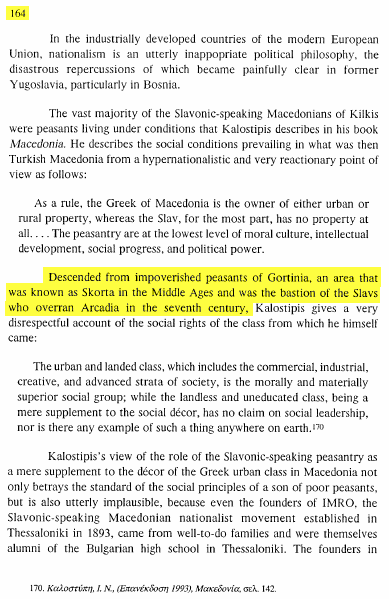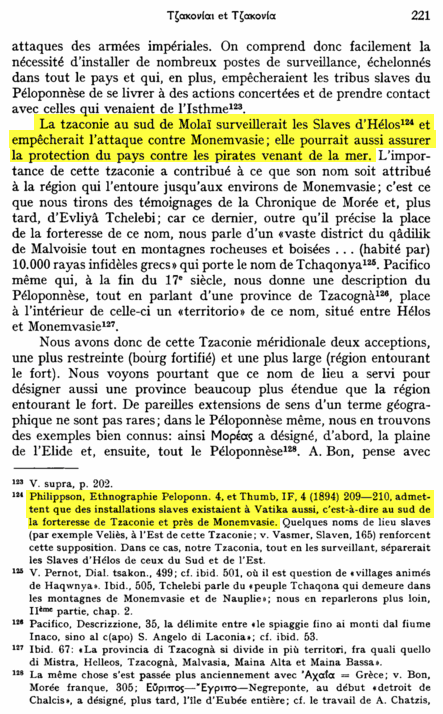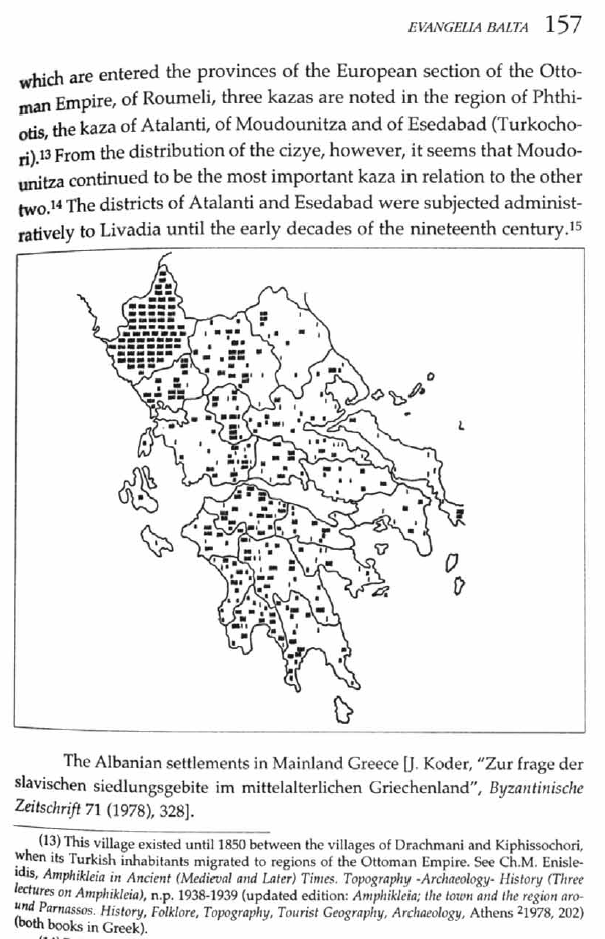
Source: Ethnographische karte des Peloponnes (ethnographic map of the Peloponnese), by Dr. Alfred Philippson, Petermanns Mitteilungen, 1890.
The Legend translated into English:
PURPLE - Newgreek language.
BLUE - Tzakonian dialect.
RED - Albanian language (current spreading).
RED - Greek and Albanian mixed.
RED - territory of Hellenized Albanians in the last generation.
Underlined in yellow ELIS, MELINCER, Vatika, Giannitsa - Slavic tribes and by Slavs inhabited regions and places from the 9th to the 12th century.
Guvaes: Popular region names, Geronthron: Names of ???,
BLUE ------ Traditional border of the Mani
RED ------ The approximate border of the Albanian territory by the 15th century
I-X Enclaves of the Albanian people





Comment